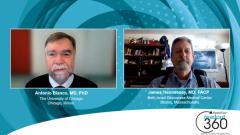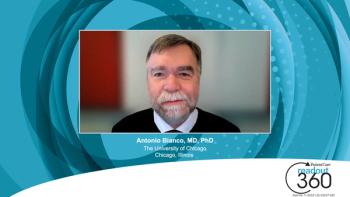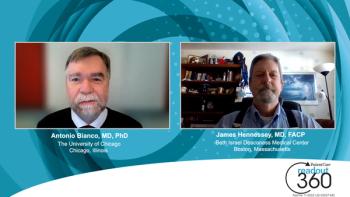
Prevalence of Primary Hypothyroidism
James Hennessey, MD, FACP, and Antonio Bianco, MD, PhD, discuss the prevalence of hypothyroidism and the role of thyroid hormone replacement therapy in managing the condition.
Episodes in this series

Antonio Bianco, MD, PhD: One thing that I keep hearing is the prevalence of hypothyroidism and how that changed over time. In my mind, I always have the number as 5% of the population. Is that the right number that you have in the US? It would be around 15 million people?
James Hennessey, MD, FACP: I believe that hypothyroidism is the most common disorder of thyroid dysfunction, and it affects somewhere in the vicinity of 5% of the US population, but that’s by the current use of thyroid function testing. Over 99% of hypothyroidism cases are primary thyroid failure. The most prevalent endogenous form is Hashimoto’s. Thyroid hormone replacement therapies have been utilized since the 1890s, so this is a problem that we thought we had a good handle on because we had a very effective treatment. Some of you might remember that thyroid hormone extracts were initially injected into people and then turned into tablets, etc., and there were some problems with manufacturing over the past 100 years. The current products are standard for the thyroid hormone content and have a ratio of about 4:1 of thyroxine to T3. Now synthetical thyroxine or levothyroxine sodium was introduced in the United States in the 1950s, and it was demonstrated in the 1970s that the body could convert T4 to T3, and therefore the need for combination treatments was diminished. Some of the observations along the time of that transition were that the dosing was a bit more precise, and that profiles of thyroid hormones after ingesting the thyroxine were more physiologic. By 1997, thyroxine was declared a new drug, go figure, but there was a positive side of this because FDA standards were set. This resulted in far more consistent products being made. We’ve got a good way of approaching hypothyroidism at this point in time and treating it.
Transcript edited for clarity
Newsletter
Enhance your clinical practice with the Patient Care newsletter, offering the latest evidence-based guidelines, diagnostic insights, and treatment strategies for primary care physicians.





